WaterViews | United States
Americans demonstrate concern for water issues, particularly for water pollution and the lack of safe drinking water.

Circle of Blue Reports
Photographs by Brent Stirton/Reportage by Getty Images
Americans demonstrate concern for water issues, particularly for water pollution and the lack of safe drinking water. Americans feel moderately empowered as individuals to address water problems, but they do say they need more information to be able to help protect water. Americans do not hold one group responsible for community water supply; responsibility is viewed to be spread among government and large companies.
When prompted on eight environmental issues, Americans consider water pollution and fresh water shortages to be among the most serious. Concern for water shortages in the United States has increased since 2003. Concern for the depletion of natural resources is also considered a top tier concern, along with water issues. Nearly all Americans surveyed (96 percent) agree that it is important for all people to have adequate, affordable drinking water. Eighty-eight percent worry that fresh water shortages will become an increasingly severe problem worldwide.
Majorities demonstrate concern for particular water issues in the United States. Concern is primarily centered around water pollution (57 percent are very concerned), the lack of safe drinking water (56 percent) and the lack of water for agriculture (47 percent). The cost of water is less of a concern to Americans (35 percent).
When asked who should be held responsible for ensuring clean water in communities, no clear majority stands out. Less than one-half of Americans believe that water companies (44 percent), the government (41 percent), and large companies (39 percent) should bear complete responsibility, while approximately 30 percent believe individual citizens should be held completely responsible. Little responsibility is placed on farmers and NGOs. While American respondents do not place primary responsibility on large companies, they do believe that companies need to be a part of the solution (79 percent agree).
A majority (60 percent) of Americans believes that individuals have the ability to contribute to the solution when addressing water shortages. Seventy-five percent of Americans indicate they need more information before they would feel able to help protect water.
Survey analysis provided by GlobeScan in cooperation with Circle of Blue. Download the complete GlobeScan/Circle of Blue Report [pdf].
United States by the Numbers
- Population: 307,212,123
- Population Demography: 82% urban | 18% rural
- GDP per Capita: US $47,000
- Access to Safe Drinking Water: 100% urban | 94% rural
- Access to Sanitation: 100% urban | 99% rural
- Daily Domestic Water Use: 570 L/day
- Water Use by Sector: 13% domestic | 46% industrial | 41% agricultural
United States: Country Profile
Despite universal access to drinking water and sanitation, the United States faces massive challenges in water management, pollution, scarcity and infrastructure. According to the General Accounting Office, at least 36 states report that they anticipate water shortages in the next five years.
Much of California has been declared a drought emergency, and the five-state Colorado Plateau is in the eighth year of a drought. The Colorado River Basin is over-allocated. States are withdrawing water from the basin at a rate greater than the rate of replenishment. Lake Mead and Lake Powell — the largest reservoirs in the country — are also half full. Some scientists estimate they could be empty within 20 years.
Meanwhile, the Great Lakes, which hold a fifth of the planet’s fresh water, are suffering multiple crises caused by invasive species, toxic wastes, storm water overflows, and sedimentation and runoff from sprawling development along the shoreline. Congress is considering a proposal to spend $26 billion to repair crumbling infrastructure and to clean up toxic wastes.
In other regions of the country, metropolitan rivers remain too polluted for swimming. Mercury contaminates fish in much of the industrial Midwest. The Ogallala Aquifer, which supplies water to the grain farmers of the Great Plains, is steadily being drained. And snow packs that feed rivers and lakes in the Rocky Mountain West are gradually losing moisture because of global climate change.
Circle of Blue provides relevant, reliable, and actionable on-the-ground information about the world’s resource crises.


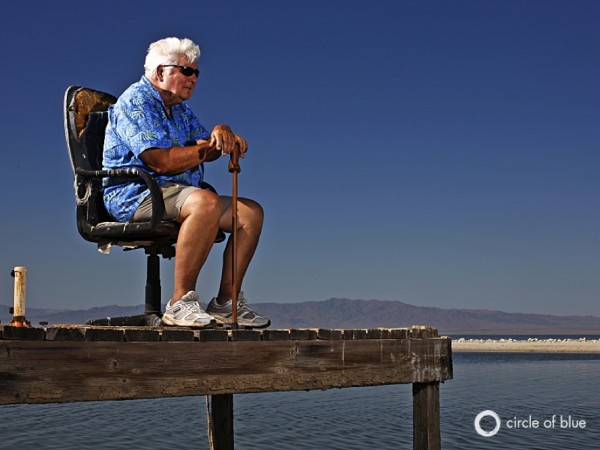




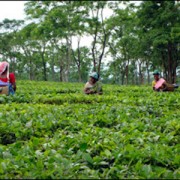
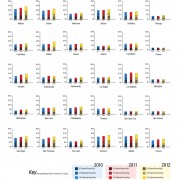


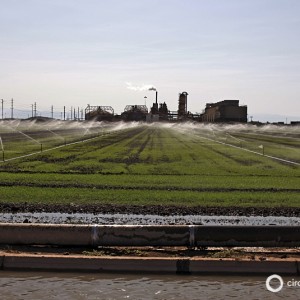
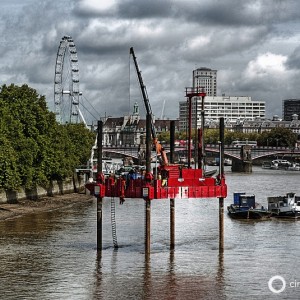
I think as Americans we need to take a strong look at our current lifestyle and how it needs to change. Recently reading “When the Rivers Run Dry” by Fred Pearce, I never realized the amount of water that goes into my daily consumption such as coffee, cereals, sugar, etc. I was surprised at the amount of water per pound of sugar since it and other sweeteners pervade so many of our foodstuffs.
It is funny that the amount we are concerned with, drinking water and water used in the home, is what we are told to be concerned about. Get a low-flow shower head and toilet, check your sprinklers for overspray and only water 3 days for 10 minutes, etc. Besides just growing that pound of potatoes per 45 gallons what about the processing plants, shipping, packaging? I thought I read somewhere that an average of 120,000 gallons of water is used to manufacture one car. I can only assume we do not hear about this since it would hurt profits.
I find it amazing so many small issues permeate our culture and it seems to keep us from seeing the big picture which in my opinion are water, oil and overpopulation. We need to realize that our standard of living makes unnecessary demands on our water supply, too much energy goes into producing/transporting foods and other material goods and this has all led to a culture where we think we are in control so everyone is concerned about ‘living the dream’ of a good job, a house and car and having multiple children instead of realizing it is leading to humanity’s dominance as a species to just an insignificant blip on the radar.
The information I keep trying to find out and to some extent I have is what to do about it as an individual. Do I stay away from prepackaged goods and eat lower on the food chain? Should I even be living in California since it is essentially a desert and not meant to sustain the amount of life it currently does? Wherever I live do I eat only the local foods? Considering the amount of water that goes into making milk, meats, coffee can we responsibly consume them? Should more homes have individual rain collection systems? What are we doing about manufacturers producing goods? Should there be a global initiative to reduce the population?